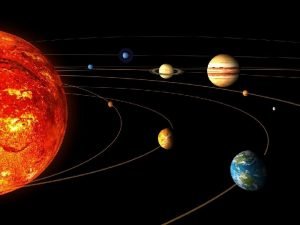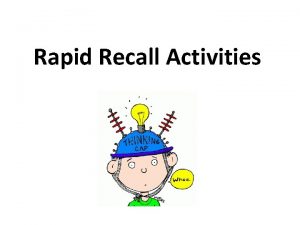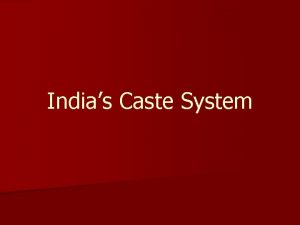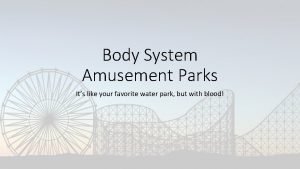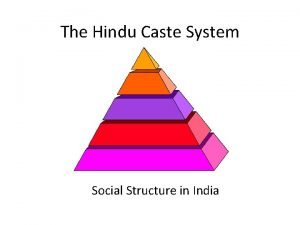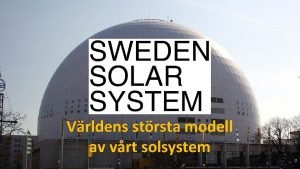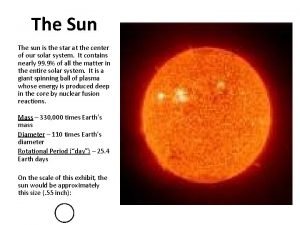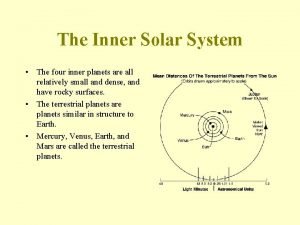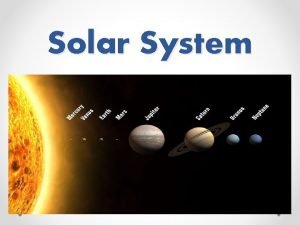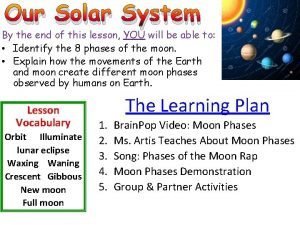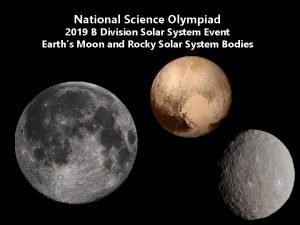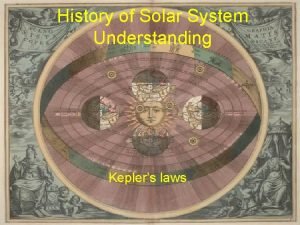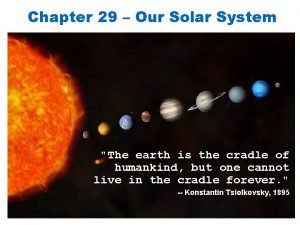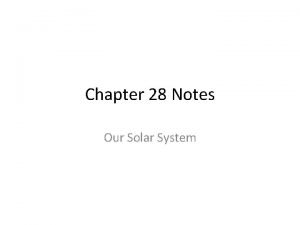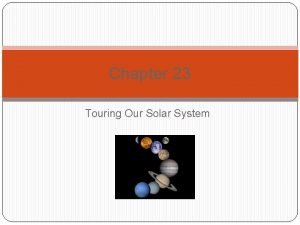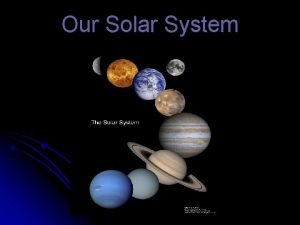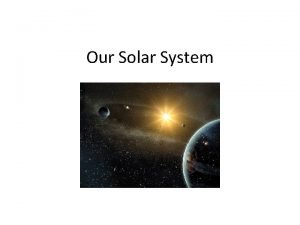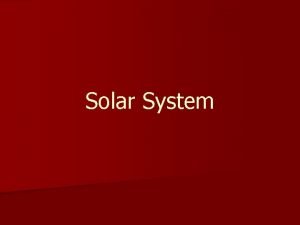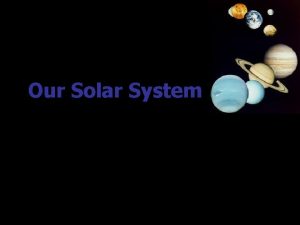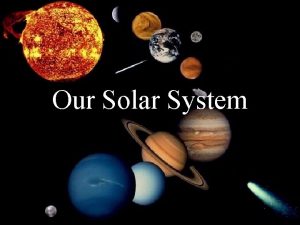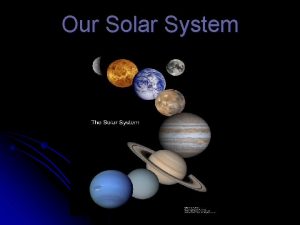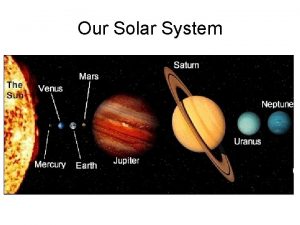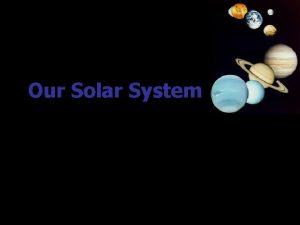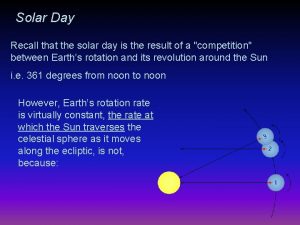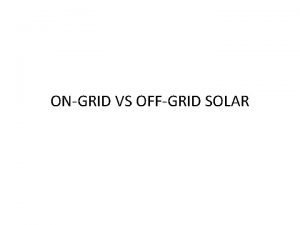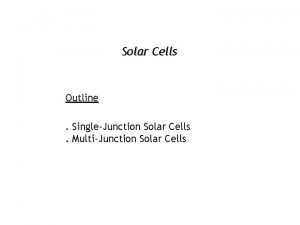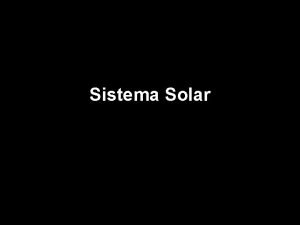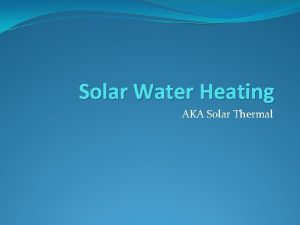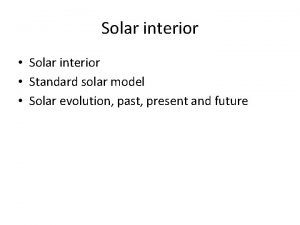The Solar System Recall the names of the





















- Slides: 21


The Solar System • Recall the names of the planets • Describe some characteristics of each planet • Use information to state the order of the planets

What is at the centre of the solar system?

The Sun Centre of the Solar System The Solar System sun, like all others suns, is a star. The sun, and other stars, are luminous objects All other objects in the solar system orbit the sun

Can you remember the names of all the planets?

The Solar System is made up of many objects, including; the sun, EIGHT planets, meteors and THREE dwarf planets. Restart Next

Task: Complete the planets fact cards

Mercury • Mercury is the planet nearest to the Sun. • It is the second smallest of the planets. • Mercury is dry, hot and virtually airless. • There is no life on Mercury. • Mercury has no moons. • One day on Mercury lasts 58. 7 earth days. • It takes 88 days to orbit the Sun.

• Venus is the second planet from the Sun. • Venus is the hottest planet at 482 ° C • Venus is covered with pale clouds which makes it difficult to see the surface of the planet. • No life can exist on Venus. • Venus has no moons. • One day on Venus lasts 243 earth days. • Venus has a tilt of 177 ° which means that it spins in a clockwise direction • It takes 225 days to orbit the Sun. Venus

Earth • The Earth is the third planet from the Sun. • The atmosphere on Earth protects it from the rays of the Sun. • It has one moon. • About three-quarters of the Earth’s surface is covered in water. • One day on Earth lasts 24 hours. • It takes 365. 25 days to orbit the Sun.

Mars • Mars is the fourth planet from the Sun. • Mars has very little air. • It has no surface water. • It is bitterly cold on Mars. • Rocks on Mars contain iron which makes the planet look red. • Mars has 2 moons. • It has a diameter of 6794 Km • One day on Mars lasts about 24. 6 Earth hours. • It takes 687 Earth days to orbit the Sun.

Jupiter • • Jupiter is the fifth planet from the Sun. It is the largest planet in the Solar System. It has over 18 moons, two of which are huge. Only 18 moons are named Its largest moon is called Ganymede. Jupiter has a small ring system. One day on Jupiter lasts nearly 10 Earth hours. It takes 11. 9 years (4332 Earth day) to orbit the Sun.

Saturn • Saturn is the sixth planet from the Sun. • It is 1427 million Km from the sun • It is surrounded by over 1000 rings made of ice and dust. • It has at least 18 moons. • One day on Saturn lasts about 10. 2 Hours. • It takes 29. 5 years to orbit the Sun.

Uranus • Uranus is the seventh planet from the Sun. • Methane gas in its atmosphere gives Uranus a blue-green colour. • It has 15 known moons. • It has 11 known rings. • Uranus has a tilt of 98 °, which means that is spins on its side • One day on Uranus lasts about 18 Earth hours. • It takes 84 years to orbit the Sun.

Neptune • Neptune is the eighth , but sometimes it is the ninth planet from the Sun. • Neptune has 2 moons. • Its largest moon is called Triton. • It has two thick and two thin rings around it. • It is 4497 million Km from the sun • One day on Neptune lasts 19. 1 Earth hours. • It takes 165 years to orbit the Sun.

What about Pluto? • Pluto was thought to be the ninth planet from the Sun, but sometimes it is the eighth. • It has now been reclassified as a “Dwarf Planet”. • It has a diameter of 2324 Km • It has a temperature of -230 ° C • It takes 90600 Earth days which is 248. 2 Earth years to orbit the sun • It follows a different orbital path to the planets

Use your Top Trumps to order the planets and complete your sheet

Make up a mnemonic to remember the order of the planets from the sun • • • Mercury Venus Earth Mars Jupiter Saturn Uranus Neptune Pluto • • • My Very Energetic Mum Just Skipped Up Nana’s Patio

Remember the Planets Here is a quick way of remembering the names and order of the planets. My Very e n u s e r c u r y Easy Method Just Speeds Up Naming a r t h a r s u p i t e r a t u r n r a n u s e p t u n e Challenge: Write your own mnemonic to remember the order of the planets! Restart Next

Questions 1. 2. 3. 4. 5. 6. Which planet is the biggest? Which planet has most moons? Which planet has the longest day? Which planet has the shortest year? Which planets have rings? Which is the only planet that spins clockwise?

The planets (and a dwarf planet) of the solar system Planet Temp’ Distance from sun Diameter Tilt Number of moons Rotation time Orbit time Mercury Venus Earth Mars Jupiter Saturn Uranus Neptune Pluto
 Solar system names
Solar system names Wholesale sun solar panels
Wholesale sun solar panels What is an inexhaustible source of energy
What is an inexhaustible source of energy Rapid recall system
Rapid recall system Percentage of brahmins in india
Percentage of brahmins in india Indian caste system names
Indian caste system names Body amusement park
Body amusement park Which is the powerful caste in india
Which is the powerful caste in india Indian social class
Indian social class Solar system webquest answer
Solar system webquest answer Solsystem modell
Solsystem modell The sun is the star at the center of the solar system
The sun is the star at the center of the solar system Nebular theory comic strip
Nebular theory comic strip The four inner planets
The four inner planets Dual sun solar system
Dual sun solar system Outer solar system brainpop answers
Outer solar system brainpop answers Science olympiad solar system
Science olympiad solar system Kepler's model of the solar system
Kepler's model of the solar system Make me genius solar system
Make me genius solar system Chapter 29 our solar system
Chapter 29 our solar system Chapter 28 our solar system
Chapter 28 our solar system Chapter 23 touring our solar system
Chapter 23 touring our solar system
